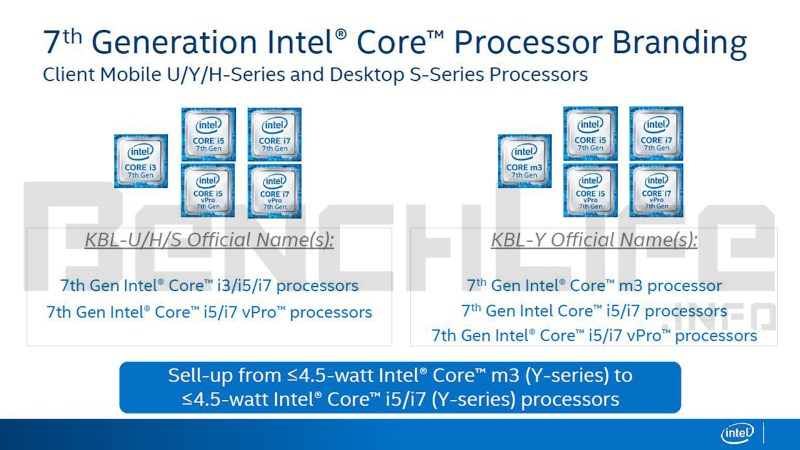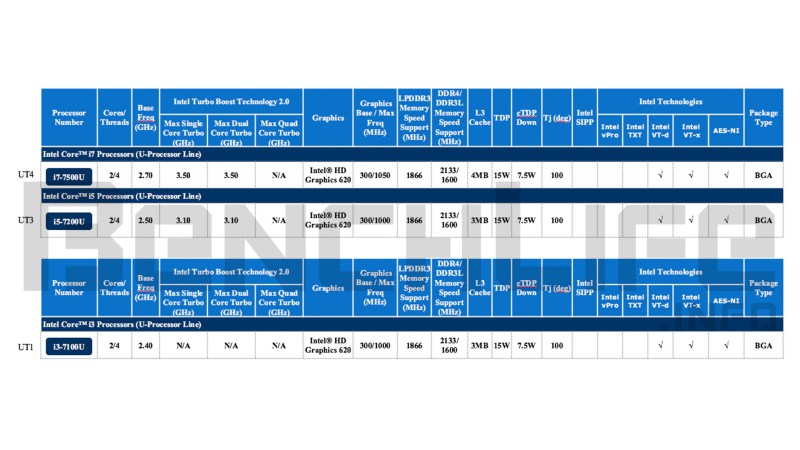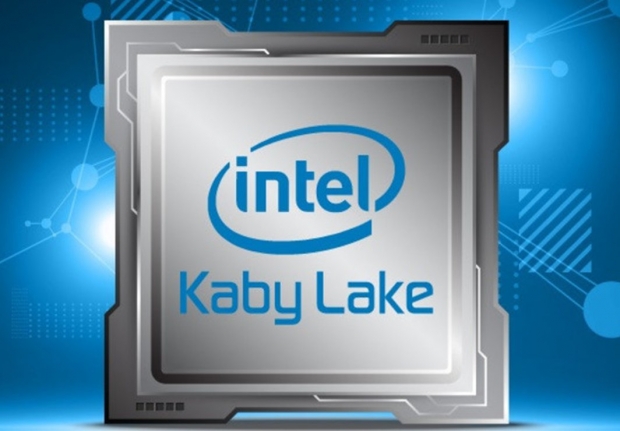Instead everything will be the Core m3/i5/i7. The microarchitecture will also bring new features such as native USB 3.1 generation 2 support and improved GPU architecture.
Benchlife has got its paws on some Kaby Lake specs:

Kaby Lake-Y will have 4.5 watt dual-core chips with Intel HD 615 graphics, the Core M3-7Y30 will have a 1 GHz CPU w/2.6 GHz turbo boost and 300/900 MHz graphics, the Core i5-7Y54 will have a 1.2 GHz CPU w/3.2 GHz turbo boost and 300/950 MHz graphics, while while the Core i7-7Y75 will hae a 1.3 GHz CPU w/3.6 GHz turbo boost and 300/1050 MHz graphics.

The Kaby Lake-U gets 15 watt dual-core chips with Intel HD 620 graphics, the Core i3-7100U has a 2.4 GHz CPU with 300/1000 MHz graphics (turbo boost N/A) and the Core i5-7200U has a 2.5 GHz CPU w/3.1 GHz turbo boost and 300/1000 MHz graphics. Lastly the Core i7-7500U has a 2.7 GHz CPU w/3.5 GHz turbo boost and 300/1050 MHz graphics.
If this is right then Intel is planning to shake up its naming conventions so that some Core i3 chips will probably offer more performance than other Core i7 chips.
So the Kaby Lake chips will be based on the same 7th-gen Intel Core architecture, and they’ll all have Intel HD 600 series graphics. But Y series chips will be much slower than U, H, or S processors. This is going to get confusing.





